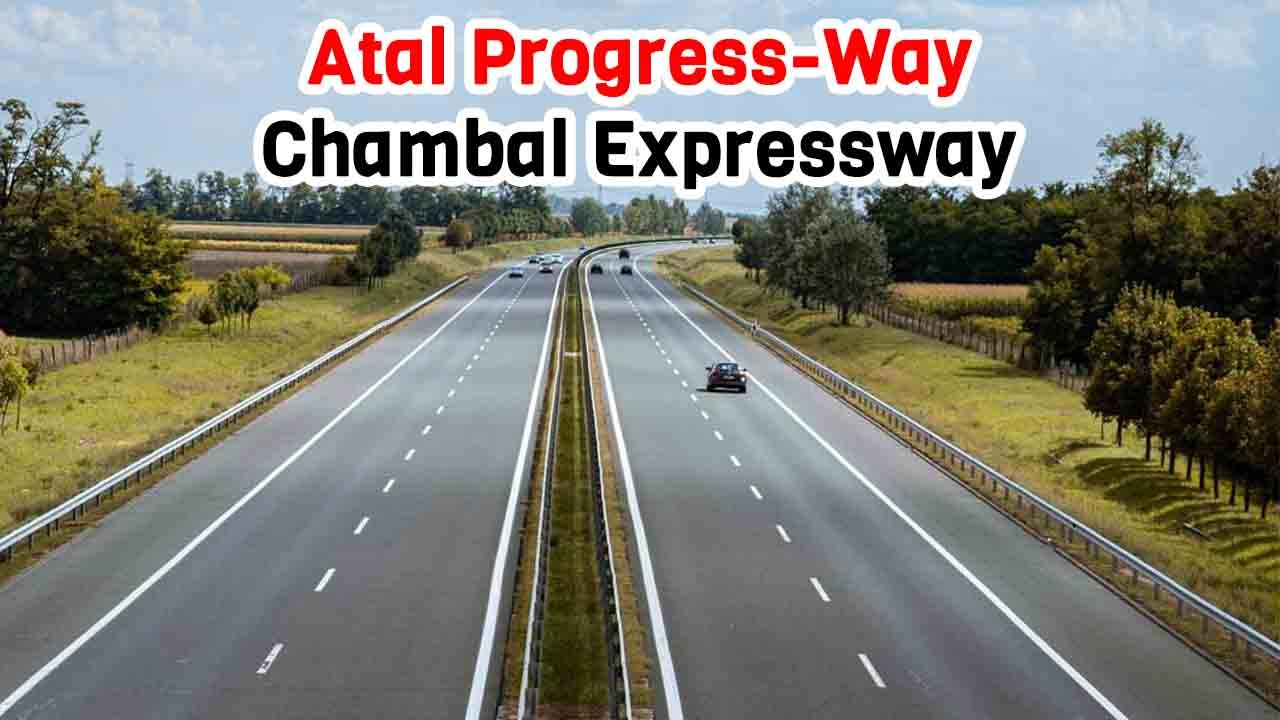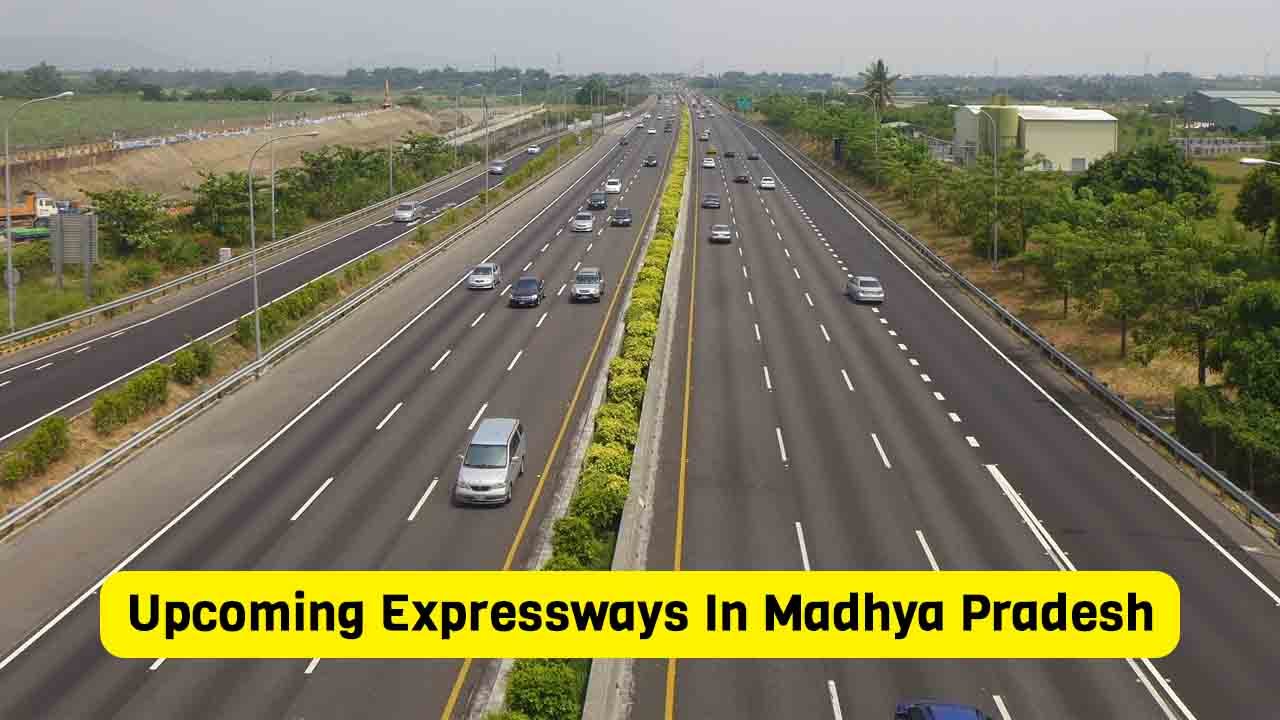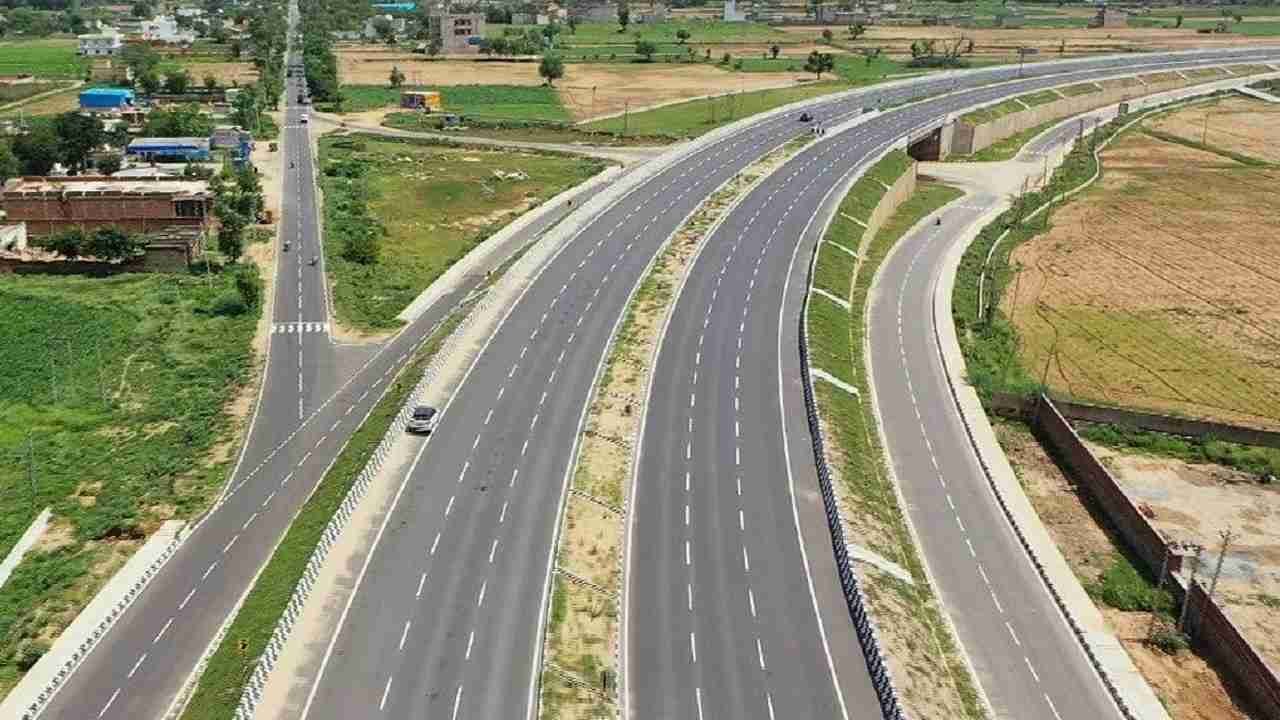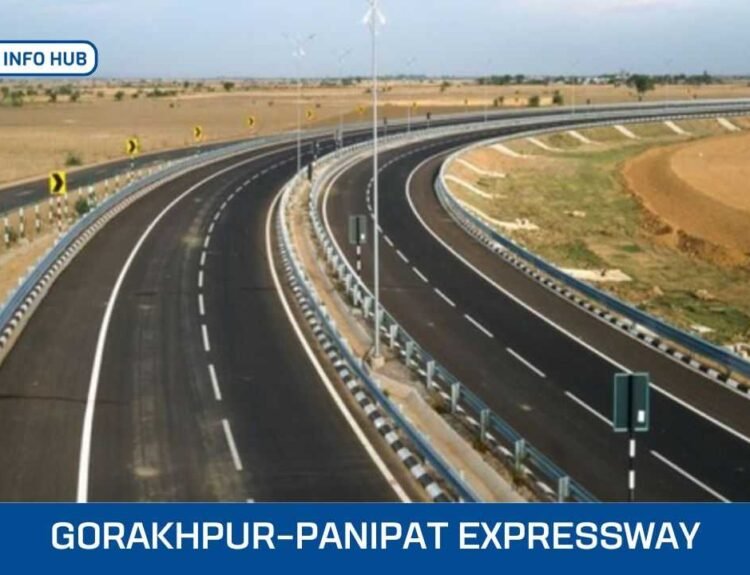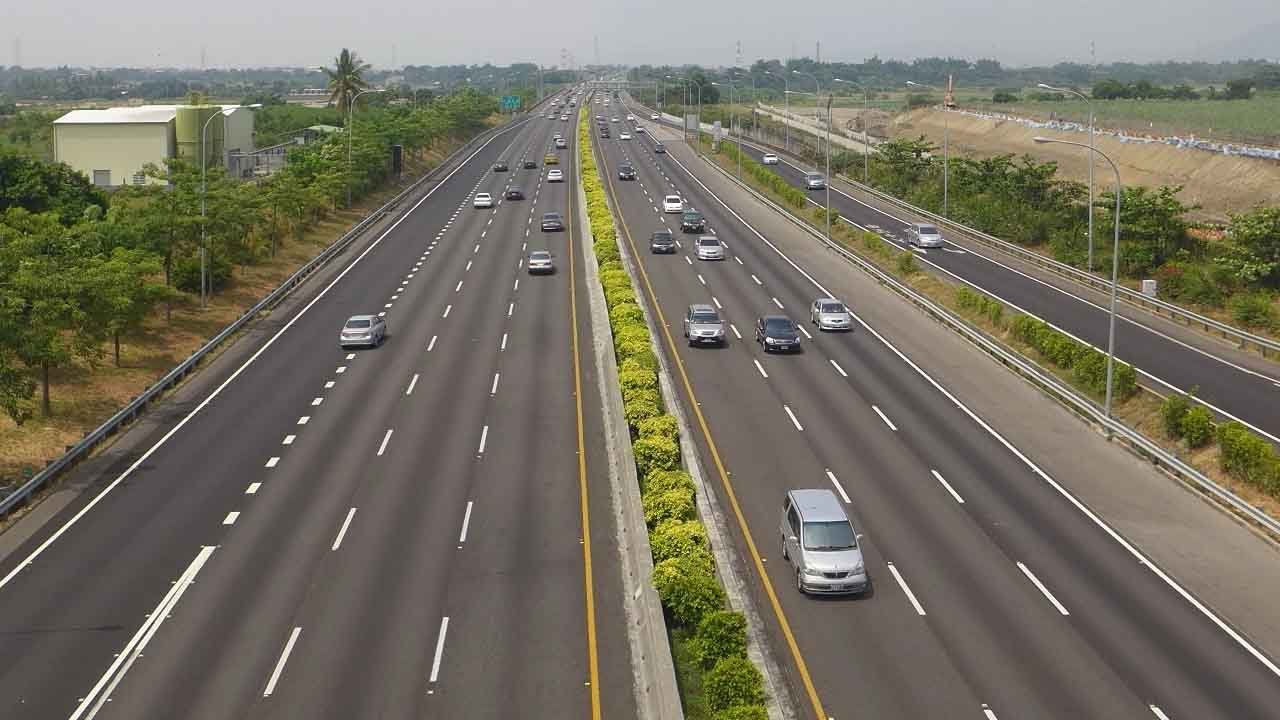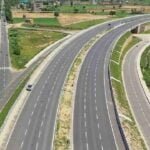Atal Progress Way, or Chambal Expressway, or Atal Pragati Path, will connect Rajasthan, Madhya Pradesh, and Uttar Pradesh. Starting from Kota in Rajasthan, it will end at Etawah in Uttar Pradesh via the Sheopur and Morena districts of Madhya Pradesh.
To improve road transport in the country, work is being done rapidly on various road projects, including expressways. In this development, Atal Progress Way is being built in Madhya Pradesh. In particular, the connectivity of the three states of Uttar Pradesh, Madhya Pradesh, and Rajasthan will be improved through this Atal Progress Way.
This expressway was named the Chambal Expressway when it started. But, to honor former Prime Minister Atal Bihari Vajpayee, the Madhya Pradesh government changed its name to Atal Progress Way.
Table of Contents
Atal Progress Way Overview
- Length: 408 km
- Cost: ₹ 23,645 crore
- Lanes: 4 (Expandable to 6)
- Starting Point: Seemalya, Kota district, Rajasthan
- Ending Point: Nanawa, Etawah district, Uttar Pradesh
- Completion Year: 2027
About Atal Progress Way
Atal Progress Way is an ambitious project of the Madhya Pradesh government. This four-lane expressway will connect Uttar Pradesh, Rajasthan, and Madhya Pradesh. This expressway will be built by the National Highway Authority of India. NHAI has started the process of DPR and land acquisition for this. Let us know the path of Atal Progress Way and its features.
The proposed “Atal Progress Way” will be built on the banks of the Chambal River. It will connect the famous city of Kota in Rajasthan and Etawah in Uttar Pradesh to Madhya Pradesh. The length of this expressway will be 408 kilometers, of which 309 kilometers will be in Madhya Pradesh, 17 kilometers in Rajasthan, and 78 kilometers in Uttar Pradesh. The estimated cost of this project is ₹ 23,645 crore.
Alt Progress-Way will start from Etawah in Uttar Pradesh, pass through Bhind and Morena in Madhya Pradesh, and reach Rajasthan from Khatauli in Kota district. The construction of this expressway will change the situation of the Bhind, Morena, and Sheopur districts of Madhya Pradesh, as well as the surrounding areas. Logistics parks, industrial centers, agricultural production centers, food processing centers, smart cities, resorts, education centers, and other facilities will be built on both sides of the expressway.
This will provide new job opportunities in these areas. More than 200 villages in the three states will get huge benefits from this project. Atal Progress-Way will be built first four lanes. When this expressway increases traffic, it can be six lanes in the future.
Atal Progress Way Route
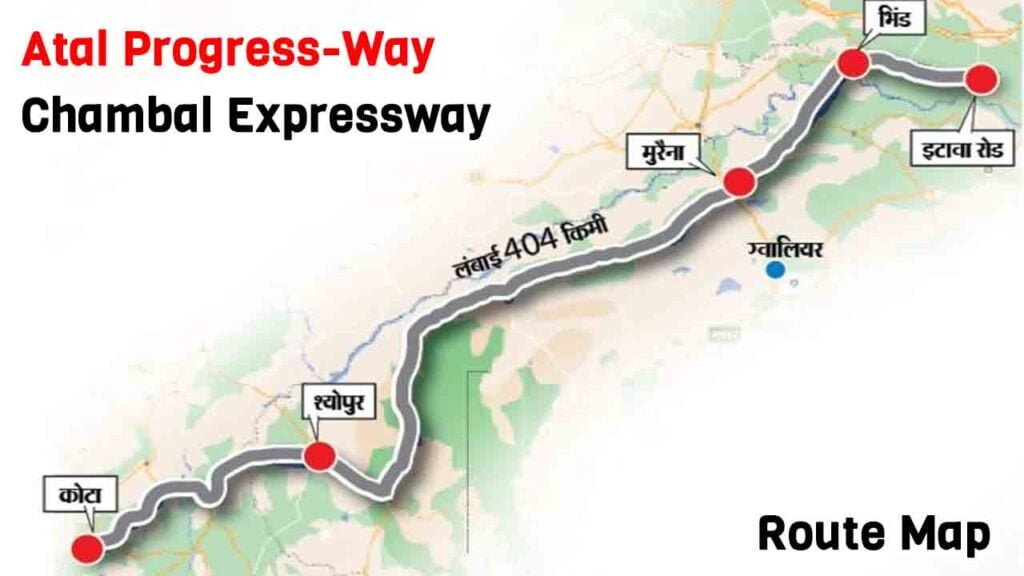
The expressway will run alongside the Chambal River. It will pass through the following states and their subordinate territories:
Rajasthan
The expressway will start at Seemlya village in the Kota district and will have an interchange with the Delhi-Mumbai expressway. The expressway will cover a distance of 72 km in Rajasthan.
Madhya Pradesh
It will cover 313 km in Madhya Pradesh. An interchange will be built in Morena to connect the Agra-Gwalior Expressway.
In Madhya Pradesh, it will pass through Sheopur in Sheopur district, Sabalgarh in Morena district, Morena in Morena district, and Bhind in Bhind district.
Uttar Pradesh
The eastern end of the expressway will be at Nanawa village in Etawah district, from where a spur will be built to connect the expressway to the Agra-Lucknow expressway. It will cover 23 km in Uttar Pradesh.
Atal Progress Way Progress
According to recent news, the National Green Tribunal (NGT) has not permitted the National Highway Authority of India (NHAI) to build the Atal Progress Way. The route has been changed to prevent the Chambal Valley from becoming an eco-sensitive area. Now the expressway will pass through ten rivers, not eight. By changing the route, land acquisition will take more time because earlier, about 75% of the land was with the government, but now about 90% of the land is with private agriculture.
In June 2022, the National Highways Authority of India (NHAI) applied for environmental clearance. The project will pass through a small part of the Kuno National Park, and land acquisition has also started.
NHAI floated the tender for the construction of the project in December 2022. 16 companies bid for the first two packages of the project in March 2023.
Atal Progress Way Benefits
- Atal Progress Way will be a fully equipped four-lane expressway, which can be expanded to six lanes. Considering the traffic density, the authority has planned to expand the expressway.
- The Atal Progress Way project will have an advanced traffic management system. It will also have emergency calling booths, CCTV cameras, and fuel stations. There will also be food shops, medical care centers, and toilets on the expressway.
- Commuters get an average speed of 120 km/h on the Atal Progress Way. There will be speed cameras on the expressway, which will monitor the speed of vehicles.
- Atal Pragati Path will be connected to many major highways and expressways, making many cities more connected to each other. The expressway will also provide an option to travel from Kota to Kanpur via Madhya Pradesh, which will reduce travel time between different cities.
- Atal Progress Way will help in industrial development in the Chambal district of Madhya Pradesh. Logistics parks will be built in this area, which will provide immense opportunities for work in the surrounding districts and areas.
Conclusion
The Chambal River inspired the construction of the four-lane Atal Progress Way. Atal Progress Way (Atal Pragati Path) will be developed under Phase I of the Bharatmala Project. Along with all other benefits, Atal Pragati Path will give farmers in Chambal easy access to big markets where they can sell their crops and earn profits, and more benefits. Farmers of Chambal will get better transportation options when the expressway becomes available to the public. Good connectivity will boost economic and social development, attracting industries to build their plants near the expressway.
Recommended:

